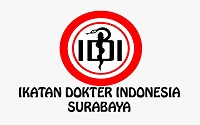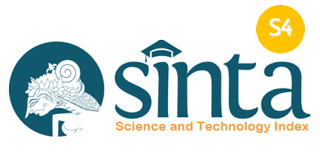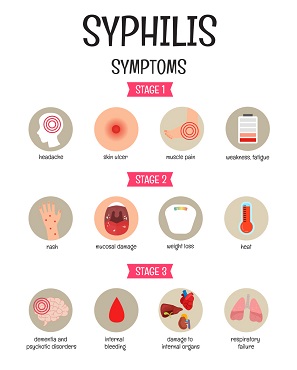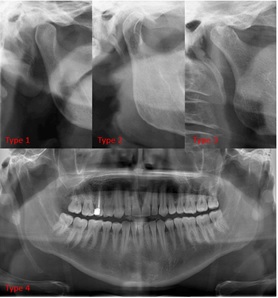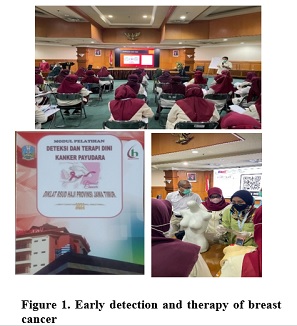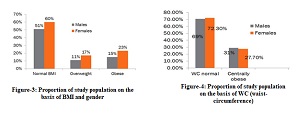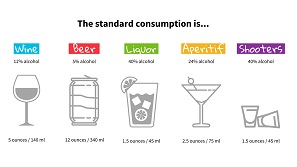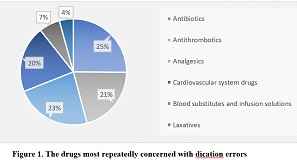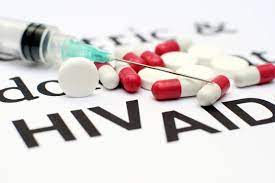Analysis of Environmental Factors with Dengue Hemorrhagic Fever in Guntur, Demak, Indonesia
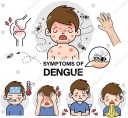
Guntur district is one of the districts that is classified as endemic for dengue fever in Demak, Indonesia. In the last three years, there have been consecutive cases or deaths due to Dengue Hemorrhagic Fever (DHF). Based on the epidemiological triangle concept, the emergence of dengue fever can be caused by an imbalance between host (human) factors, the agent as the cause, and the supporting environment. Environmental factors facilitate contact with agents consisting of the physical, social and biological environment. The physical environment that influences the occurrence of dengue fever cases includes house layout, type of container, frequency of draining the container, availability of lids on containers, altitude and climate. DHF cases in Guntur District in 2022 were 67 cases (IR 0.8 per 1,000 population). The case sample in this study was 86 respondents consisting of 43 case groups and 43 as controls. Sampling was taken in Guntur, Demak, Indonesia. The results showed that the factors having influence on the DHF were landfill materials, landfill volume, landfill availability, frequency of landfill draining, and the presence of larvae. The risk factors for dengue fever are the material of the water reservoir, the frequency of draining the water reservoir, the volume of the landfill, and the presence of larvae. People who used cement/soil landfill materials had a 3.529 greater chance of contracting dengue fever. People with less reliable behavior in draining landfills had a 5.569 times greater chance of contracting dengue fever, and people whose water reservoirs containing larvae had a 17.939 times greater chance of contracting dengue fever.
INTRODUCTION
The distribution of dengue fever cases in Indonesia in 2021 is in 34 provinces in Indonesia, with a total of 73,518 cases, with an incidence rate of 27 per 100,000 population, 747 deaths and a case fatality rate of 0.96%11.Dengue Hemorrhagic Fever (DHF) cases in Central Java Province are spread across 35 districts/cities with a total of 4,470 cases with an incidence rate of 12.2 per 100,000 population, the IR of DHF in Central Java is lower than the national target (<51/100,000 population), while the death rate occurred in 25 districts/cities with a total of 141 deaths with a case fatality rate of 2.7%, this figure is still higher than the national target (<1%)22.
Based on data from the Demak District Health Service in 2022, dengue fever cases amounted to 305 cases (IR 22.5 per 100,000 population) with 3 deaths (CFR: 1.1), this case is the highest case in the last 5 years, namely in 2021 cases DHF was 67 cases (IR 5.77 per 100,000 population) with 0 deaths (CFR: 0), in 2020 there were 107 cases (IR 9.35 per 100,000 population) with 0 deaths (CFR: 0), in In 2019 there were 168 (IR 14.94 per 100,000 population) with a death toll of 2 cases (CFR: 1.19) and in 2018 there were 42 cases (IR 3.61 per 100,000 population) with a death toll of 1 case (CFR: 2, 38)33.
Based on the epidemiological triangle concept, the emergence of dengue fever can be caused by an imbalance between host (human) factors, the agent as the cause, and the supporting environment. Environmental factors facilitate contact with agents consisting of the physical, social, and biological environment44. The physical environment that influences the occurrence of dengue fever cases includes house layout, type of container, frequency of draining the container, availability of lids on containers, altitude, and climate. The social environmental factor that influences the occurrence of dengue fever cases is population density. Increasing population density will increase contact between vectors and humans, thereby increasing the risk of dengue fever transmission55. Biological factors, namely the presence of mosquito larvae and breeding places66.
Guntur District is one of the districts classified as endemic for dengue fever in Demak Regency, namely a district where in the last 3 years there have been consecutive cases or deaths due to Dengue Hemorrhagic Fever. DHF cases in Guntur District in 2022 were 67 cases (IR 0.8 per 1,000 population)22. With a larvae free rate of 64%, this figure is still far from the national target of ≥95%. Behavior that does not pay attention to environmental cleanliness, such as a lack of awareness of draining the bathtub at least once a week, the behavior of hanging clothes, lots of unused trash/containers around the house that can hold water, and dark conditions in the house due to people's habits of not even opening windows. having no windows in the house is one of the factors behind the low larvae-free rate in Guntur District. The large number of second-hand goods collection businesses and the large number of empty houses have also played a role in increasing dengue cases in Guntur sub-district. Based on the description above, the problem in this research can be formulated, namely identifying environmental factors related to the incidence of Dengue Fever, as well as spatially assessing rainfall factors with the incidence of Dengue Fever in Demak Regency.
This research aims to analyze environmental factors (container material, frequency of draining containers, availability of container lids, container volume, and presence of larvae) with the incidence of dengue fever in Guntur, Demak, Indonesia.
MATERIALS AND METHODS
This type of research was observational with a case control design which aimed to determine the relationship between environmental factors (container material, frequency of container draining, availability of container lids, container volume, and presence of larvae) with the incidence of dengue fever in Guntur District. In this study, an analysis of the relationship between the independent variables (the environmental factors) and the dependent variable (DHF incidence) was carried out using the chi-square correlation test and spatial-temporal analysis using Geographic Information Systems (GIS).
The samples in this study were calculated using the Lemeshow formula which resulted in 86 samples consisting of 43 as case groups and 43 as control groups. Statistical tests of the relationships used the chi-square test and the spatial tests used the overlay mapping model.
RESULTS
This research was located in Guntur, Demak, Indonesia. This research was carried out on 14-19 August 2023.
Characteristics | Case | Control | ||
N | % | N | % | |
Landfill materials | ||||
Cement and soil | 30 | 69.17 | 17 | 39.53 |
Ceramics and plastic | 13 | 30.23 | 26 | 60.47 |
Landfill Volume | ||||
> 50 liters | 30 | 69.77 | 17 | 39.53 |
≤ 50 liters | 13 | 30.23 | 26 | 60.47 |
Availability of landfill cover | ||||
Available | 38 | 88.37 | 40 | 93.02 |
Not Available | 5 | 11.63 | 3 | 6.98 |
Landfill Draining Frequency | ||||
>1 week | 33 | 76.74 | 16 | 37.21 |
<1 week | 10 | 23.26 | 27 | 62.79 |
The existence of larvae | ||||
Positive | 37 | 86.05 | 11 | 25.58 |
Negative | 6 | 13.95 | 32 | 74.42 |
Characteristics | p | OR (95%Cl) |
1. Landfill materials | 0.004 | 13.529 (1.445-8.619) |
2. Landfill Volume | 0.004 | 0.283 (0.116-0.692) |
3. Availability of landfill cover | 0.356 | 0.570 (0.127-2.551) |
4. Landfill Draining Frequency | 0.000 | 5.569 (2.176-14.251) |
5. The presence of larvae | 0.000 | 17.939 (5.962-53.975) |
Fachrizal Mr. Traces of Disease History in Indonesia (1655-2020) 2022
Central Java Health Department. Central Java in 2021
Demak Health Department. Demak District Health Profile 2022
Suwandono A. Dengue Update Looking at the Journey of Dengue in West Java. Suwandono A, editor. Vol. 21. Jakarta: LIPI Press; 2019. 1–9 p.m.
Tri W, Husna I, Febriani D, Bangsawan K. The Relationship between Types of Containers with the Presence of Aedes Aegypti Larvae. The Relationship between Types of Containers with Aedes Aegypti Larvae Tusy. J Ilm Health Santi Husada. 2020;9(1):53–61.
Purnajaya IK, Rusminingsih NK, Sujaya in. Clean Water Against the Incident of Dengue Hemorrhagic Fever (DBD) in the Working Area of Upt Public Health Gianyar I in 2012. 2012;156–61.
Rahmawati ND, HLDBK Environment, FK Community. Relationship between physical, biological environmental conditions and mosquito nest eradication practices (PSN) with the incidence of dengue hemorrhagic fever (DBD) in work areas. Ejournal3UndipAcId
Ayun LL, Pabawa ET. The relationship between physical and behavioral environmental factors and the incidence of Dengue Hemorrhagic Fever (DHF) in the Sekaran Community Health Center Work Area, Gunungpati District, Semarang City. Public Heal Perspect J 2017;2(1):97–104.
Parida S, Dharma S, Hasan W. Relationship between the presence of larvae. J Work Environment and Safety. 2013;2(2):1–7
Ketut Purnajaya. The influence of the characteristics of clean water reservoirs on the incidence of dengue hemorrhagic fever (DHF) in the work area of the Gianyar Health Center in 2012
Perwitasari D, RES RN, Ariati J. Entomological Index and Distribution of Dengue Hemorrhagic Fever Vectors in North Maluku Province in 2015. Research Media and Health Developers. 2018;28(4):279–88.
Lahdji A PB. Relationship between Rainfall, Temperature, Humidity and Cases of Dengue Hemorrhagic Fever in Semarang City. yifa' Med J Medical and Health. 2019;
Sumirat J. Environmental Health. Pres GMaU, editor. Yogyakarta; 2009
Carundeng Maurien, Malonda NSH, Umboh JML, Health F, Universitas M, Ratulangi S. Analysis of factors related to the incidence of dengue hemorrhagic fever at the Gogagoman Community Health Center, Kotamobagu City. Public Health Faculty, Sam Ratulangi Univ. 2015;000:8–15.
Minarti, M., Anwar, C., Irfannuddin, I., Irsan C. Community knowledge and attitudes about the transmission of dengue haemorrhagic fever and its relationship to prevention behavior in Palembang, South Sumatra, Indonesia
Indonesian Ministry of Health. Indonesia Health Profile 2021
Sulina, P. S. 2012. Relationship between the presence of Aedes aegypti larvae and the implementation 3M Plus with the incidence of dengue fever in Ward XVIII Subdistrict Binjai Medan City 2012. [Thesis]. Faculty of Public Health.University of Northern Sumatra. Medan
Arfan I. The existence of Aedes SP larvae based on container characteristics in endemic and non -endemic areas of dengue hemorrhagic fever. J ilm Health Sciences Health Insight. 2019; 5 (2): 258-66.
Ministry of Health R. Daily Bulletin Behavior and life cycle of Aedes Aegypti mosquitoes is very important to be known in carrying out mosquito nest eradication activities including
periodic monitoring. Directorate General of P2M and PL Jakarta, Editor. Jakarta; 2004.
Budiman, Hamidah. Characteristics of Container Types Preferred by Aedes aegypti Larvae in the Bulili Community Health Center Working Area. J Public Health. 2017;7(2):107–12
Copyright (c) 2024 FIKA HARIYANTI

This work is licensed under a Creative Commons Attribution-ShareAlike 4.0 International License.
- The journal allows the author to hold the copyright of the article without restrictions.
- The journal allows the author(s) to retain publishing rights without restrictions.
- The legal formal aspect of journal publication accessibility refers to Creative Commons Attribution Share-Alike (CC BY-SA).
- The Creative Commons Attribution Share-Alike (CC BY-SA) license allows re-distribution and re-use of a licensed work on the conditions that the creator is appropriately credited and that any derivative work is made available under "the same, similar or a compatible license”. Other than the conditions mentioned above, the editorial board is not responsible for copyright violation.






